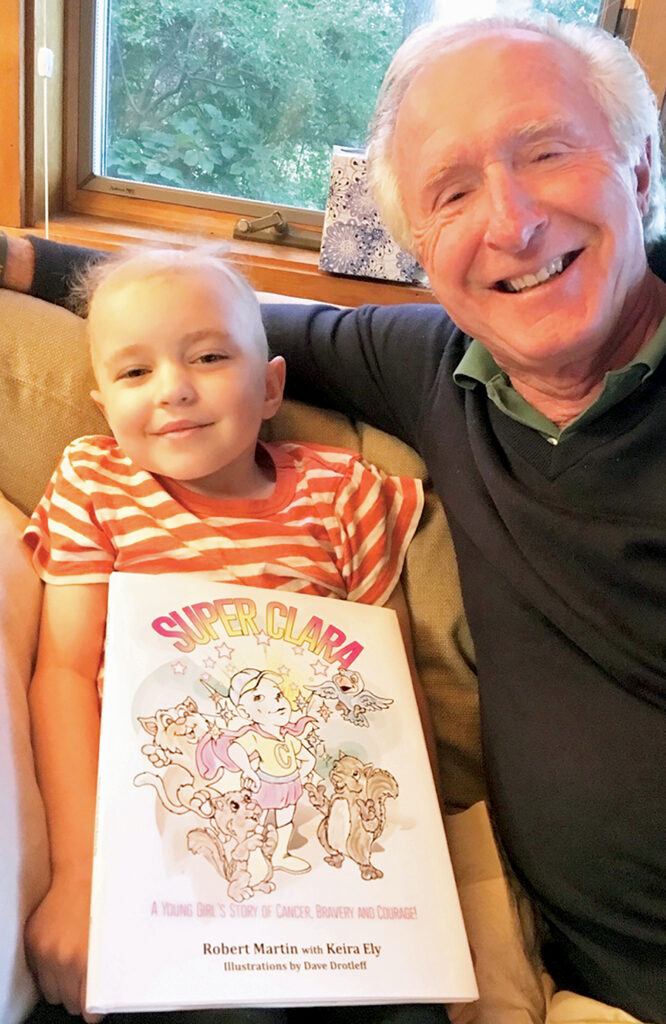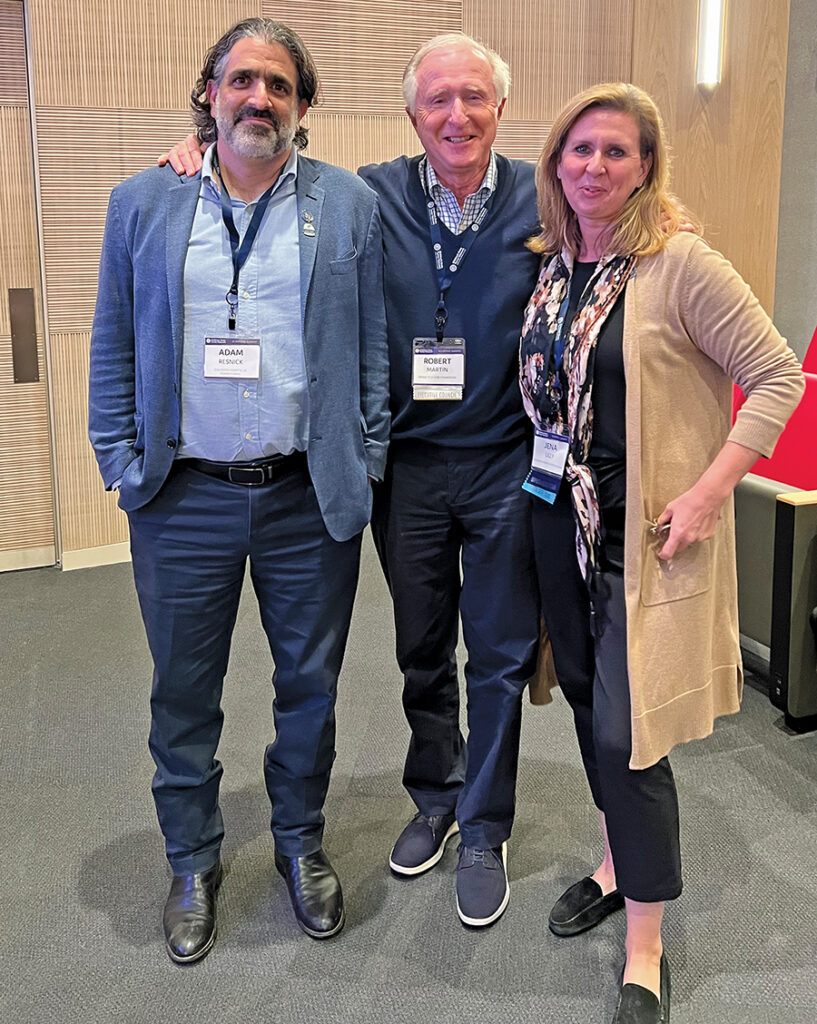Giving Back | written by: PAMELA DEY VOSSLER with the Bridge to a Cure Foundation

Clara with Bob, also an author, and the book he wrote for her | Photographs courtesy Bob Martin
What do you do when you’ve conquered steep odds, pulled yourself back from the brink of some nearly derailing teenage shenanigans to succeed beyond anything you might have imagined for yourself, and proven your grit and your ability to tackle all manner of challenge only to stand by, helplessly, as your beloved 6-year-old granddaughter fights and ultimately loses a battle with pediatric brain cancer?
You mourn. You thank the universe for the time you had with her then you tuck her into your soul, channel your grief and get to work. You use everything that propelled you to overcome the long odds of your youth and achieve a career in the top echelons of business to find a cure.
That’s what Darien’s Bob Martin did when his granddaughter Clara died in 2017. In truth, Bob, a retired division president of a Fortune 500 company, began his fight when she was diagnosed a year earlier. He was appalled by what he found.
“We didn’t understand how terrible the treatment would be. What they call the standard of care—surgery, chemotherapy, radiation, it’s horrific. It’s so painful,” said Bob. “Basically, they were applying the same treatments to a child as they do to adults. They would dial it down a bit, but there wasn’t any treatment developed specifically for children. That’s when I started. I traveled the world, looking for cures,” he explained.
When most grandfathers are buying their grandchildren ice cream and cheering on their first efforts at whatever, Bob was meeting with pediatric practitioners globally—120 in all, and establishing the Bridge to a Cure Foundation (BTAC), a 501c3 aimed at uniting and transforming the childhood cancer community’s approach to research.
He learned that while cancer strikes 14,000 children in the U.S, and 300,000 worldwide each year, it’s a blip compared to the more than 2 million new cases expected to be diagnosed in total in 2024 in the U.S. alone. That makes childhood cancer an “orphan disease” so it struggles for funding and attention, despite its position as the leading cause of death by disease among children, with brain cancer the number one disease killer of children overall.
With BTAC, it is an orphan no more: The fight has found a home in this four-phase plan.
Phase 1: Discovery
From March 17, 2016, to October 8, 2017, BTAC met with 120 pediatric cancer practitioners in seven countries. Key findings:
- The current approach to childhood cancer research is not delivering the breakthroughs needed, and the resulting impact on children and their families is devastating.
- Childhood cancer research and oncology have attracted some of the best minds and institutions. They are dedicated, brilliant and caring. They want to make a difference. But there are barriers:
- Insufficient data necessary for discovery.
- Reluctance to collaborate/operating in silos.
- Lack of funding.
Phase 2: New Approach
On October 5, 2017, Bob presented the BTAC framework for a new approach to childhood cancer research to National Cancer Institute (NCI) Director Ned Sharpless. Elements included:
- Develop a robust database open to all researchers globally.
- Employ generative AI (artificial intelligence) in the research process.
- Target cancer cells with our own immune system, angiogenesis and/or apoptosis.
This led to the launch of NCI’s Children’s Cancer Data Initiative (CCDI); a 10-year, $500 million program to build a national pediatric cancer database. Additionally, BTAC helped lobby for legislation passed in 2020 that requires pediatric cancer research funding from pharmaceutical companies that develop treatments for adults.

Bob (center) with Dr. Adam Resnick, and Jenna Lily, Executive Director of Research Operations and Strategic Planning (also with CHOP)
Phase 3: The Plan
While the NCI’s initiative was directed at all childhood cancers, BTAC focuses on childhood brain tumors. To expedite work on a cure, they committed to building an independent model for childhood brain cancer that once tested and validated could be applied to all types of childhood cancers. In fact, this model could be applied to all childhood diseases and disorders.
To execute this plan, BTAC established a partnership with Dr. Adam Resnick, a visionary leader in pediatric brain tumor data and collaboration at Children’s Hospital of Philadelphia (CHOP), a leading cancer research center, and the Children’s Brain Tumor Network he established there. The BTAC plan, like the model presented to NCI, targets data collection and advancing the use of AI to assist with accelerating research.
Results to date:
- Millions of data points collected, including 8,400 complete data sets plus access to the world’s largest biobank of pediatric brain tumor specimens.
- Amazon (AWS) is fully engaged in preparing this data for the optimization of generative AI. Pilots are underway.
Phase 4: Fulfilling the Promise; Finding the Cure
In the final phase, BTAC and Dr. Resnick’s team will bring together the following to target cancer cells with our own immune system, angiogenesis and/or apoptosis to cure high-grade glioma brain tumors in children by 2030:
- The largest childhood database in the world
- Amazon’s (AWS) trailblazing artificial intelligence
advancements - A team of the best researchers from leading pediatric cancer institutions
Already, they have established a collaborative, multi-institutional team with researchers from Duke Cancer Center, the Children’s Brain Tumor Network, Dana-Farber Cancer Center and UCLA, and AWS team member(s) have been assigned to deploy the full capabilities of AI. Moving forward, the team will be working to:
- Identify and resolve data gaps.
- Complete AI proof of concept project.
- Develop work processes and measurable goals.
For more on Bridge to a Cure and their exciting work, visit bridgetoacure.org.



